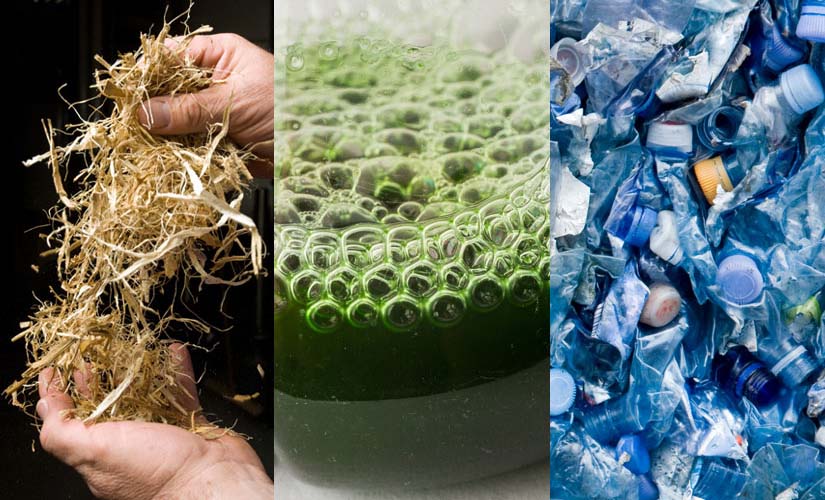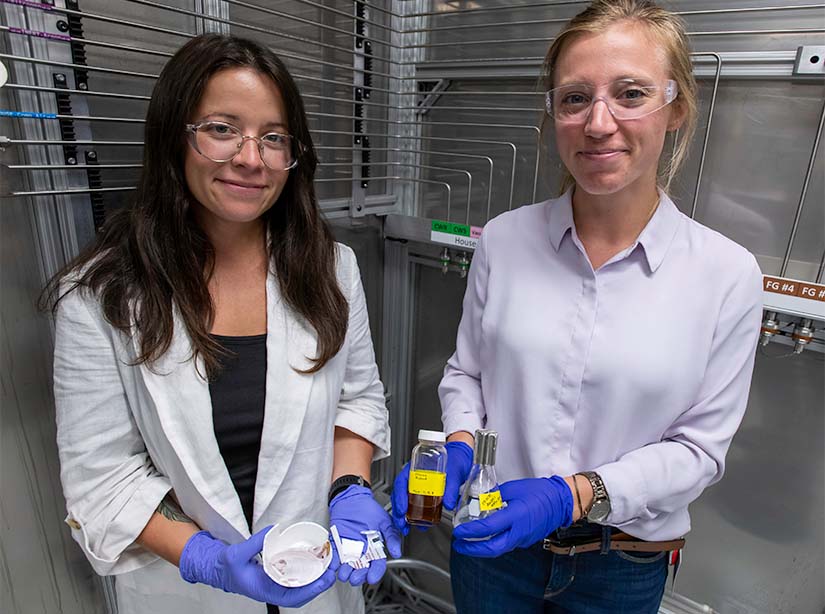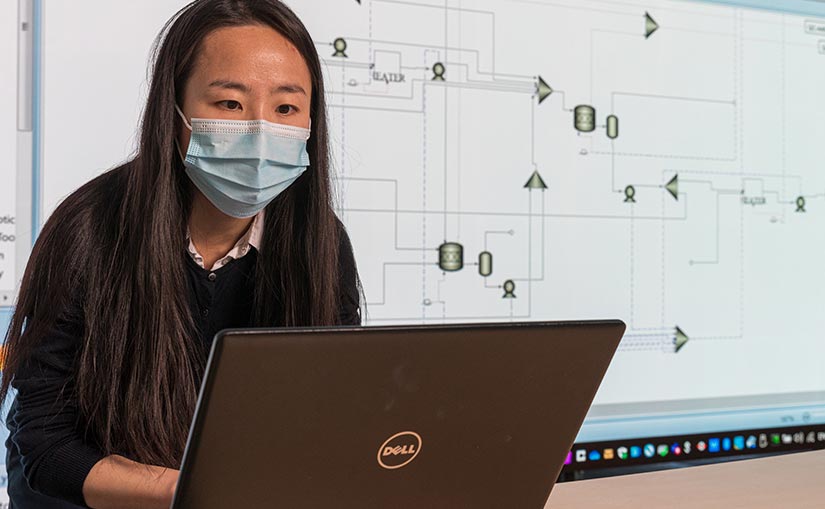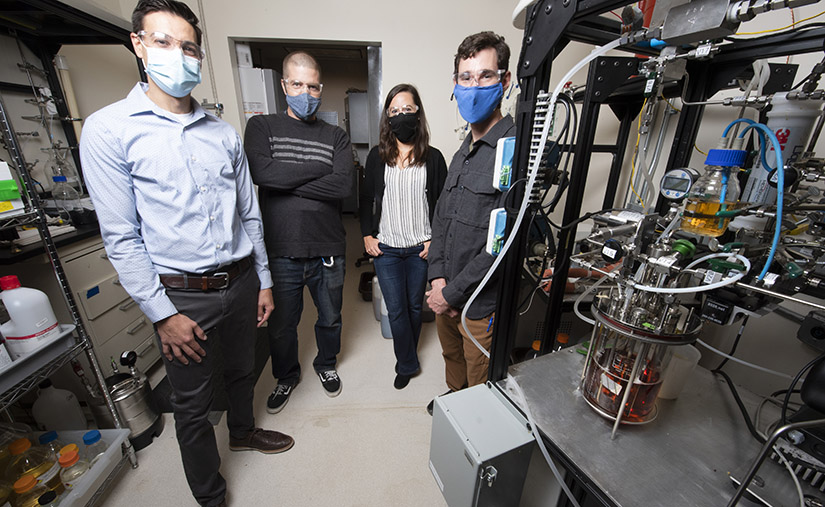NREL Celebrates 10th Annual National Bioenergy Day

Today, Oct. 20, 2022, marks the 10th annual National Bioenergy Day. Join the U.S. Department of Energy's (DOE's) National Renewable Energy Laboratory (NREL) in celebrating another year of advancements in producing sustainable energy, fuels, and materials from plant waste.
NREL’s bioenergy research is essential in meeting the nation’s decarbonization goals. To commemorate the day, NREL is reflecting on recent partnerships, technical advancements, and research breakthroughs in making sustainable aviation fuel (SAF) from biomass, capturing and recycling carbon from the atmosphere, enabling circular economies for materials, sending research projects into space, and more.
NREL and Cemvita Factory Team Up To Put Carbon Dioxide to Good Use
A partnership between NREL and Cemvita Factory will use microorganisms to convert captured carbon dioxide (CO2) into valuable chemicals and fuels. Today’s method of using petroleum to make chemicals contributes more than 2% of global carbon emissions. Chemicals made from captured and converted CO2, on the other hand, can achieve a net-negative footprint by ultimately lowering concentrations of the gas in the atmosphere.
Researchers Develop a Process Using Lignin To Make Drop-In 100% SAF
Researchers at three institutions—NREL, the Massachusetts Institute of Technology, and Washington State University—developed a new process that uses lignin, an underutilized natural resource, to make drop-in 100% SAF. The process makes hydrocarbons from the lignin that are suitable for use as a jet fuel blendstock, using earth-abundant materials instead of expensive noble metals used in other processes.
Alder Fuels and NREL Partner To Scale SAF Technology for Commercial Use
NREL and Alder Fuels are working together to scale a critical pathway for producing large quantities of low- to negative-carbon SAF. Analysis by NREL shows that Alder Fuels' greencrude technology—which includes NREL's SAF from wet waste and Alder's advanced pyrolysis technology—can make energy-dense liquid fuels with a negative carbon footprint. When blended with conventional jet fuel in high volumes—up to 100%—the resulting fuel could support net-zero-carbon flight.

NREL Selected To Study the Effects of Spaceflight on Bacteria Engineered To Upcycle Plastic Waste
Researchers at NREL will send an engineered bacteria into space as early as next year as part of ongoing research into solving the problem of plastic waste mitigation on Earth. The project uses an accelerated oxidation process to break down plastics, creating a carbon source for Pseudomonas putida, which can then upcycle the chemicals into new bioproducts. The researchers hypothesize that the conditions of spaceflight—such as microgravity and increased radiation—could boost the performance of the engineered bacterial strain.
Researchers Design a New Pathway in Bacteria To Make SAF
Researchers have shown how to improve production of Acetyl-CoA, the main ingredient for making multiple fuel chemicals, using a novel pathway in gas-fermenting bacteria. By doing so, they brighten the possibility for using biological methods to capture and convert CO2 into sustainable fuels at the industrial scale.
SAFFiRE Project Makes SAF From Corn Stover
An NREL pilot plant project, Sustainable Aviation Fuel From [i] Renewable Ethanol, or SAFFiRE, plans to turn an agricultural waste product of little value—corn stover—into profitable and environmentally friendly fuels. NREL scientists have proved the SAFFiRE process is effective, less expensive than petroleum-based jet fuel, and could reduce carbon intensity by up to 84% compared to conventional jet fuel.
A Genetic Technique Allows Photosynthetic Organisms To Stably Produce Ethylene
A cross-institution research team led by NREL discovered and demonstrated that a specific gene can stabilize bacteria that produce ethylene. Biologically produced ethylene is a double-win for clean energy: It recycles CO2 and displaces fossil-based feedstocks that industry currently depends on. Compared to other biological pathways, which use plant biomass as a starting material, the method pursued in this work is fueled directly by the sun, making it potentially more energetically favorable.
Renewables To Replace Petroleum-Based Materials in Commercial Filtration Systems
Until now, most flocculants—chemicals that remove sediments from water—have been petroleum-based. New patented technology from NREL makes it possible to produce flocculants from biomass, providing an environmentally sustainable and cost-competitive alternative. Mars Materials was granted an option for an exclusive license to use NREL's renewable acrylonitrile technology to produce bio-based flocculants for commercial use in water treatment systems.

Decarbonizing Fuel and Chemical Production With Green Electricity and Recycled Carbon
NREL scientists studied the technical and economic potential of making chemicals and fuels using renewable, zero-emission electricity and recycled carbon found in CO2 and biomass. The resulting production process could be significantly less carbon intensive than traditional methods that use “fossil” carbon stored underground and carbon-heavy energy sources like petroleum, coal, and natural gas. In fact, growing supplies of renewable electricity open exciting new doors for making identical products at potentially a fraction of the climate cost.
Machine Learning Allows Scientists To Draw Metabolic Maps of Biological Systems
Like traffic signals controlling cars through the center of town, microorganisms use metabolic signals to control the flow of metabolites—the energy and nutrients that govern cellular health and productivity. NREL scientists created a machine learning algorithm to boost the efficiency of the standard method of predicting and modeling this process. Using this new method, scientists can have the information they need to optimize the flow of metabolic traffic in microbes to transform biomass into climate-friendly biofuels at a large scale.
Plant-Based and Recyclable Carbon Fiber Can Improve Electric Vehicle Economics
Using carbon fiber to make a typical passenger car can cut its weight in half—boosting fuel efficiency as much as 35%. However, its production is energy intensive and the material is difficult to break down for recycling, effectively offsetting any efficiency benefits. NREL researchers redesigned the material using biomass and showed that it can be recycled at room temperature while maintaining its quality. The resulting plant-based and recyclable carbon fiber could be more economical for mass market electric vehicles and lower the material’s greenhouse gas footprint by 20%–40%, while keeping production costs the same.
NREL’s Patented Cyanobacteria Could Help Colonize Mars
NREL scientists are harnessing cyanobacteria to convert CO₂ from Earth's atmosphere into chemicals currently made from petroleum and natural gas—a step toward decarbonizing the chemical industry. With partner Nzyme2HC, they are also exploring whether astronauts can use NREL's patented ethylene-emitting cyanobacteria to manufacture building materials and produce oxygen on Mars.
Machine Learning Helps Researchers Make Better Batteries
Researchers from NREL, the Colorado School of Mines, and the University of Illinois demonstrated a machine learning method that can quickly identify compatible materials to make better batteries. Results could save researchers valuable time, accelerate designs for solid-state batteries—a promising next generation of battery technology—and more.

Renewable Butyric Acid Can Create Cheaper and More Earth-Friendly Fuels
Scientists at NREL developed a process for producing renewable butyric acid, a promising precursor for diesel and jet fuel, from lignocellulosic biomass—resulting in a 50% reduction in greenhouse gas emissions compared to traditional methods. The renewable fuel is cheaper than the same material made from petroleum, demonstrating an economically feasible route from biomass to renewable diesel and jet fuel.
Upcycling PET Using Engineered Microorganisms
NREL and its collaborators have developed a method to upcycle polyethylene terephthalate (PET) into performance-advantaged nylon, a precursor to other valuable products such as waterproof clothing, stick-free cookware coatings, and heat-resistant machine parts. This breakthrough creates an opportunity to turn plastic pollution into valuable manufacturing materials and enable a circular economy at scale.
Learn more about NREL’s bioenergy research.
Last Updated May 28, 2025
